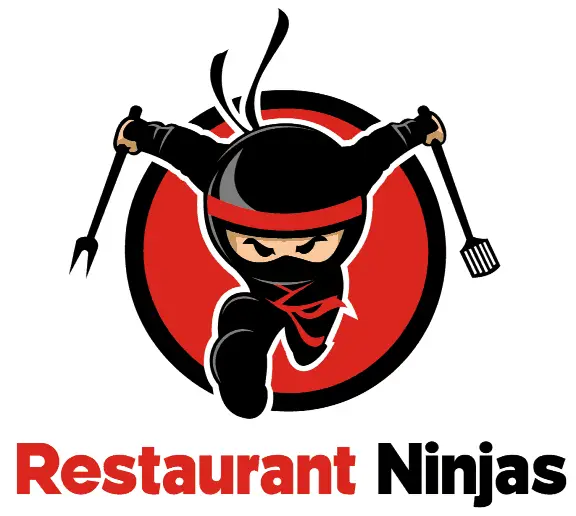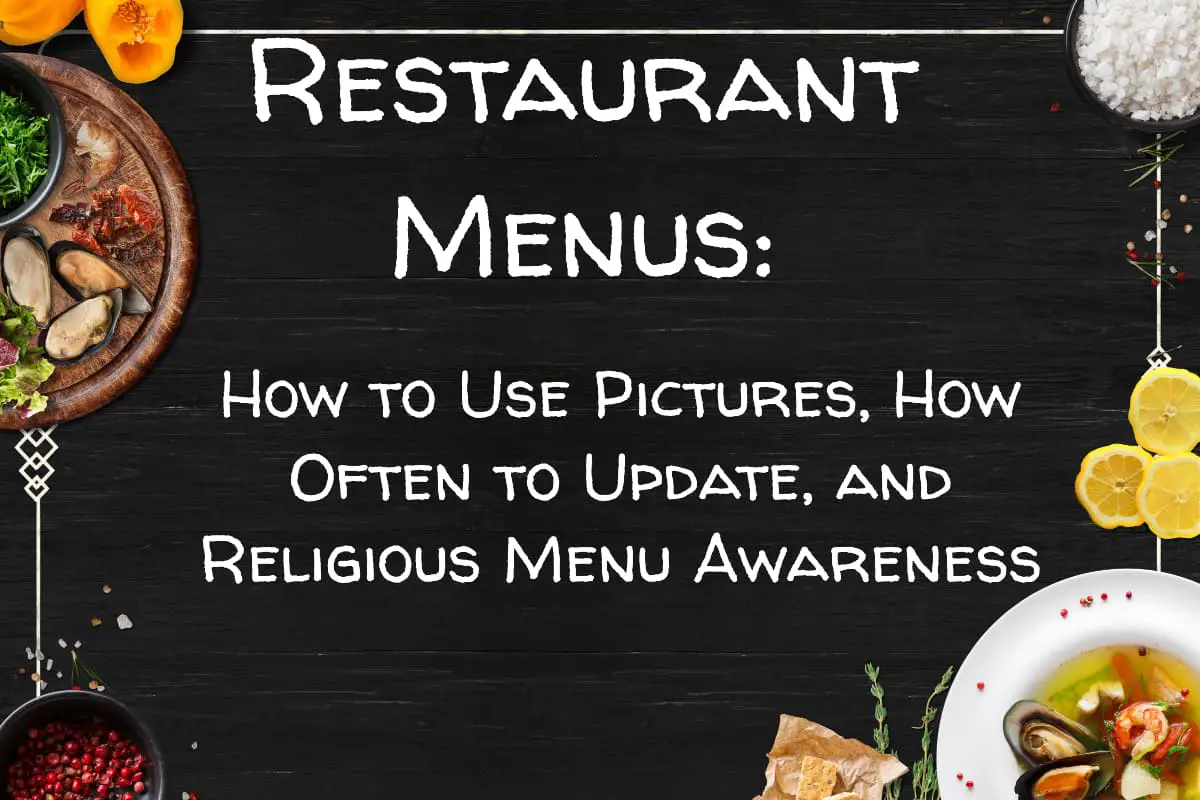Designing a restaurant menu is hard work and requires careful planning and attention to detail. The dishes you choose to offer, pricing, and layout are all things during menu construction that consume the most focus. As if that is not enough, there are still other elements that need consideration for your menu.
Today I am going to tackle some of the common questions that are often asked during menu design but not frequently talked about.
Should Pictures be Used in a Menu?
The use of pictures on a menu is a polarizing subject. Many experts believe that adding images is tacky, while others cite the widespread use of them as evidence of their effectiveness.
Should pictures be used in a menu? Maybe. It depends on the formality of the restaurant, the quality of the photographs, and the extent to which the pictures are used.
If you decide to use pictures in your menu, use them sparingly. Never use more than one photo per page.
The Case FOR Using Pictures on a Menu
Use pictures to draw attention to items with a high margin. Opinions are mixed as to the effectiveness of photos to sell things, but I firmly believe that good food photography, combined with a well-written description, can only have a positive impact on sales. If it didn’t work, restaurant chains across the world would not be using photos in their menus.
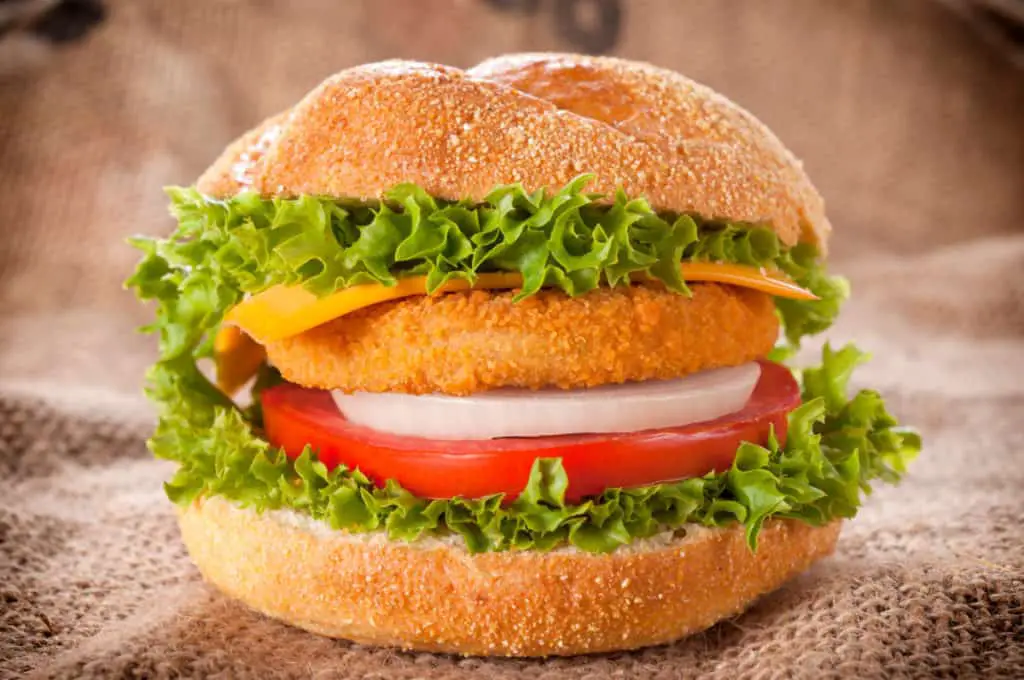
Iowa State University did a study on how a salad dish would sell when pictures are placed on a digital display in addition to just a description. The study, conducted on kids at a YMCA camp, concluded that campers were 70 percent more likely to order a salad if they saw the digitally displayed picture of the salad. As the old saying goes, people eat with their eyes.
Using food photography is a great way to showcase unique dishes or items that you are offering as a daily special. Your website will look great, showing off some of your signature recipes as well.
Speaking of digital menu boards, they are a great way to use photography. While digital menu boards are expensive, some studies show the return on investment as higher than 25% on average. With the cost of monitors continuing to decrease, now is the time to upgrade if you are using menu boards. If you do decide to upgrade to digital menu boards, adding pictures to them is a no brainer.
The Case AGAINST Using Pictures on a Menu
Understand that people will make assumptions about your level of service based on your menu design. Menus that are most associated with pictures include diners, tourist spots, and Chinese restaurants. If being associated with this type of fare is not what you want, avoid photographs altogether.
If your recipes and operations are not adequately standardized enough for your cooks to replicate a dish repeatedly precisely as pictured, then do not use photos in your menu. Not meeting the customers’ visual expectations of what they ordered is hard to recover from, no matter how good the food tastes.
Taking Menu Photos
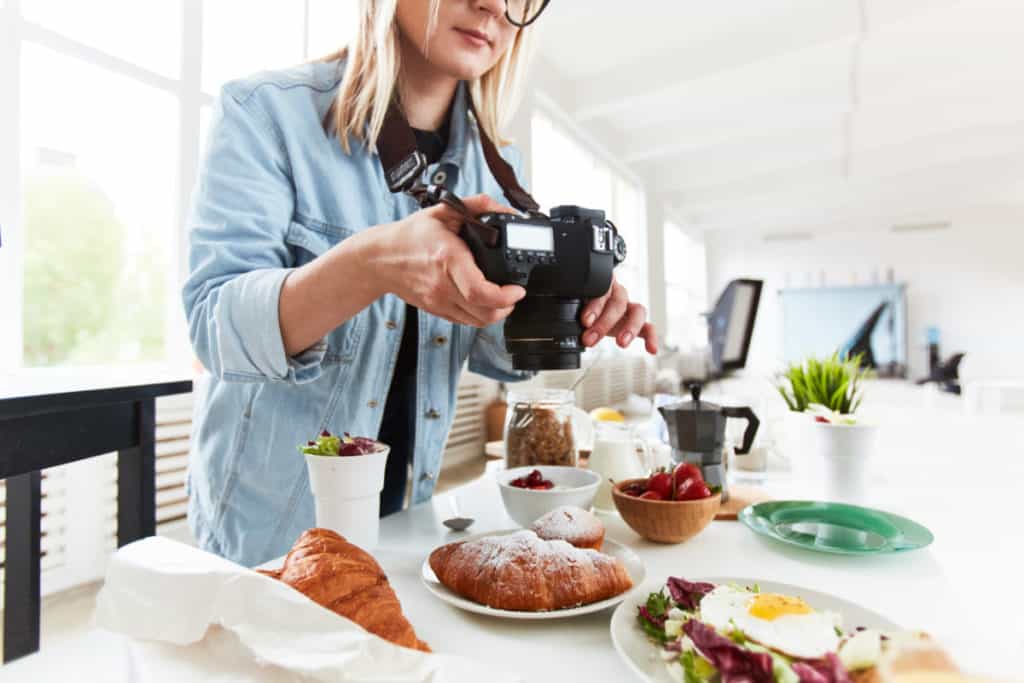
One of the biggest mistakes you can make is using stock photos for your menu. It is incredibly tacky and very obvious once the food is served. Using stock photography is a great way to disappoint customers by over-promising and under-delivering.
Ask any photographer and they will tell you food photography is difficult. Arranging the food, setting up bright lighting, and composing the shot are challenging. Trying to do the photography yourself without professional equipment or training is often a recipe for failure. (Recipe for failure. Get it? Sorry, the Dad jokes are kicking in).
Hiring a professional photographer for a few hours is not cheap but is well worth the investment. Target a wedding photographer; they usually don’t plan to do shoots on weekdays, so they can generally be had at a reduced rate.
If you think your photography skills are good enough to tackle on your own, make sure to at least have some quality equipment. A newish smartphone can take some great shots if done correctly. Spend some money on a few softboxes (under $100) to get the righting light, and you have already won half the battle. Lighting alone will make your photographs better.
Prepping the food for photography is the challenging part. Tease the vegetables, so they stand up nicely and evenly. I have heard of photographers using spray oil to make buns shine, tweezers to tease lettuce, and a hidden towel fresh out of the microwave to generate steam.
You might be thinking that this will produce a picture that is so highly faked that you won’t be able to replicate it out of your kitchen. You don’t want customers having a visual expectation that you do not come close to achieving. Your right to think this, and it is one of the biggest arguments against using photos.
Printing the pictures is a whole other animal. Do not try doing it on your office printer; either purchase a high-quality printer or send them to a print shop.
How Often Should a Menu be Updated?
Almost all chain restaurants, regardless of concept type, regularly add, subtract, and rotate items on their menu. Consider the success of these restaurants as you are wondering if it is necessary to make regular changes. There are multiple reasons to update your menu regularly.
First and foremost, menu updates that include new items keep you relevant and drive business. When people hear of a great new dish or see pictures on social media, they are compelled to check it out for themselves.
Whether they admit it or not, menu changes add excitement to your employees. The challenge of suggesting and cooking a new dish can add some variety to an often-monotonous industry. Plus, let’s face it; our employees get tired of eating the same food every day. If you don’t believe me, track your employee sales of new dishes, then you will.
The cost volatility of certain ingredients throughout different times of the year alone are reasons enough to make regular updates. For example, strawberries can cost anywhere between 50 to 150 percent more in the winter than when they are in season over the summer.
A menu update is a perfect opportunity to make some needed adjustments to your menu. Underperforming dishes should be removed and replaced with something new. This is also the ideal time to reevaluate and increase prices if needed.
At a minimum, you should update your menu annually, but the most successful frequency is two to four times per year. Having seasonally inspired items make it easier to determine the timing of updates.
Religious Dietary Considerations for Your Menu?
Understanding religious dietary rules will allow you to include items on your menu that comply with these requirements and cast a wider net of potential customers. Trying to have something for everyone is a dangerous game to play. That said, it is a win-win if you can fit in something for as many as possible while keeping your menu size manageable.
Use the table below to help quickly identify the rules for each of the major religions. I think it is wise to try to include at least one, but ideally two, items in each category that would comply with dietary restrictions.
| Religon | Restrictions |
|---|---|
| Christianity | Meat on Friday’s during Lent (40 Days and Nights before Easter) |
| Judaism | Pork, Shellfish, Insects, Miscellaneous Non-Kosher Foods. No Bread during Passover Week (Early Spring) |
| Islam | No Pork, Shellfish, or Alcohol. Fasting from Dawn to Dusk during Ramadan (Early Spring) |
| Hinduism | Beef & Animal Derived Fats (Most practitioners are vegetarian) |
| Buddhism | All Meats |
Bariatric Surgery Menu Considerations
The widespread epidemic of obesity in the United States has led many people to Bariatric Surgery. Gastric Bypass, Gastric Sleeve, and Lap-band are all different types of bariatric surgery that work to achieve the same goal of limiting food intake per sitting.
People who have these procedures done can only eat tiny portions of food per meal. Because of this, they will often request that you offer a reduced portion of an item for a reduced price. They might even have a special menu request medical card to explain.
There is no legal requirement mandating that a restaurant complies with providing a small portion at a reduced price; however, I highly recommend that you fulfill the request.
I had Gastric Sleeve Surgery in April 2018. Since that time, I have lost 170lbs and counting. It has been an arduous journey, and the few restaurants that worked with me without making me feel uneasy have earned my gratitude and continued patronage.
Other Dietary Restriction Considerations
As people become more aware of Celiac Disease and gluten sensitivity, more and more people are limiting or eliminating gluten from their menu. Restaurants that advertise crave-able gluten-free options are cashing in on this trend.
Dairy is another ingredient that studies are showing to have a negative effect on some people.
Keto is a high fat / low carb diet similar to the Atkins that appears to be sticking around for the long run.
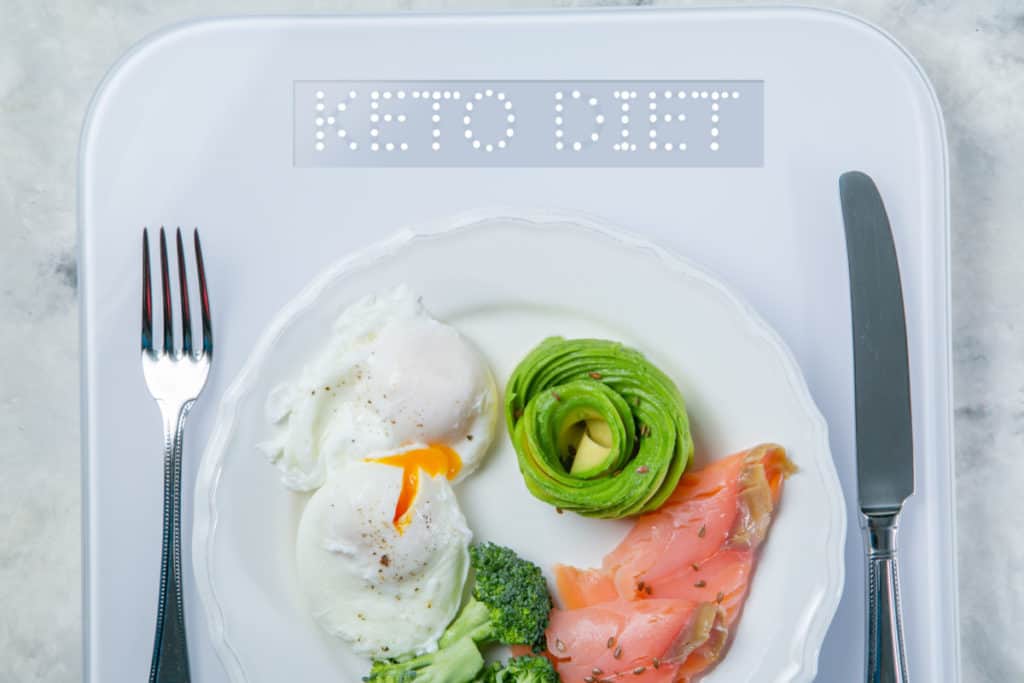
Burger King made headlines in 2019 with their “Impossible Whopper” that was 100% plant-based and is supposed to be indistinguishable in taste from a standard Whopper. I haven’t had one yet myself, but the way the burger has been marketed is evidence of the growing plant-based food movement.
You need to keep your menu size manageable, but fitting items that comply with as many of these trends as possible gives you an edge over a competitor that will suffer the “veto vote.” The veto vote is exactly what it sounds like; it’s the vote by a minority of the group that eliminates potential restaurants from the shortlist of gathering places for the group to visit.
Designing your menu before opening is a stressful and challenging task. Not to fear, though, Restaurant Ninjas is here to be your “secret weapon” and help you create a menu that rocks!
